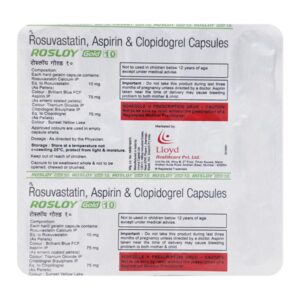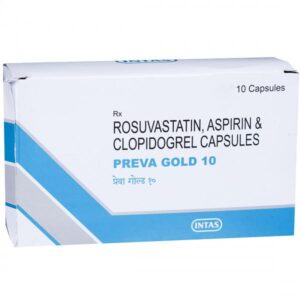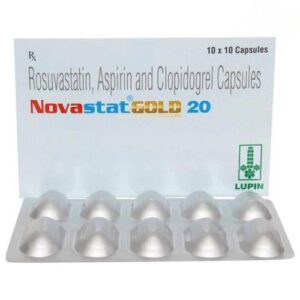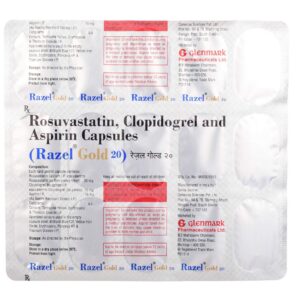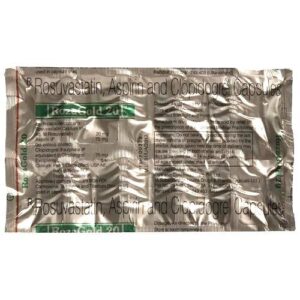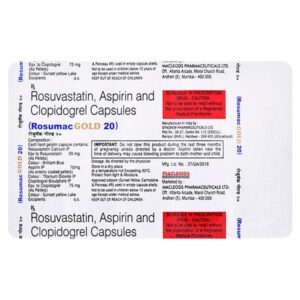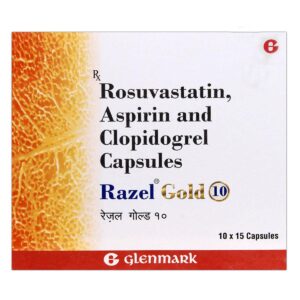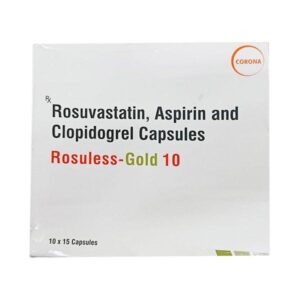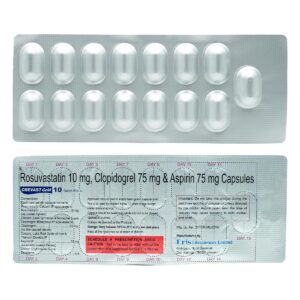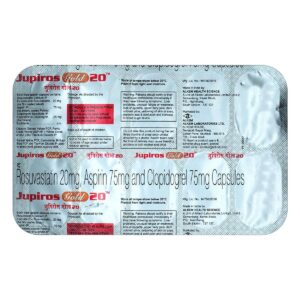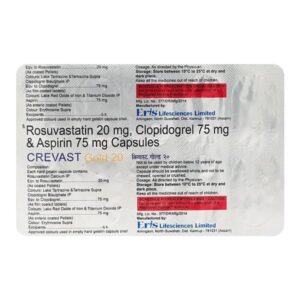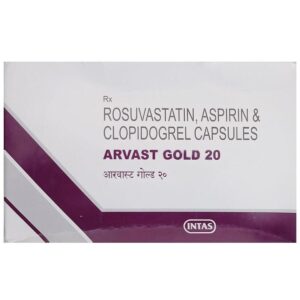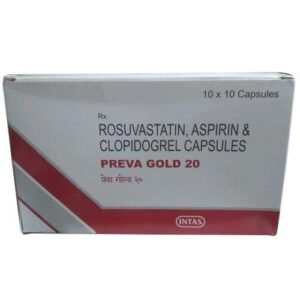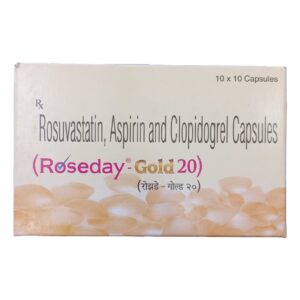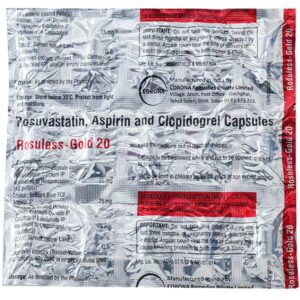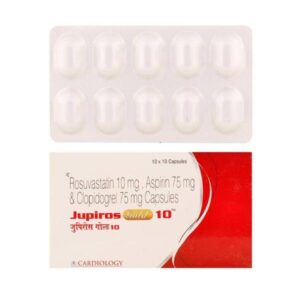CLOPIDOGREL + ACETYL SALICYLIC ACID (ASA OR ASPIRIN) + ROSUVASTATIN
Clopidogrel: Clopidogrel is a medication that belongs to a class of drugs known as antiplatelets. It is primarily used to prevent blood clots in people with conditions such as heart attack, stroke, or peripheral artery disease.
The mechanism of action of clopidogrel involves inhibiting the activation of platelets in the blood. Platelets are responsible for promoting clotting and play a crucial role in the formation of blood clots. By inhibiting platelet activation, clopidogrel reduces the risk of clot formation, thereby preventing events such as heart attacks and strokes.
The usual dose of clopidogrel for most conditions is 75 mg once daily, often taken with or without food. In some cases, such as acute coronary syndrome, a loading dose of 300 mg may be given initially followed by the maintenance dose of 75 mg. The exact dose and duration of treatment will depend on the individual’s condition and the healthcare provider’s recommendation.
Like any medication, clopidogrel may cause side effects. Common side effects include easy bruising, nosebleeds, diarrhea, and stomach upset. Less commonly, it can cause allergic reactions, such as rash, itching, or swelling. In rare cases, more serious side effects like severe bleeding, liver problems, or low platelet count may occur. It is important to inform a healthcare provider about any concerning side effects experienced while taking clopidogrel.
It is worth noting that clopidogrel may interact with certain medications, such as blood thinners, proton pump inhibitors, or some antidepressants. Therefore, it is important to inform the healthcare provider about all medications being taken to prevent any potential drug interactions.
Clopidogrel should not be started or stopped without discussing with a healthcare provider as it may increase the risk of clot formation. It is important to follow the prescribed dose and inform the healthcare provider about any concerns or side effects experienced while taking this medication.
Acetyl Salicylic Acid (asa Or Aspirin): Acetyl Salicylic Acid, commonly known as ASA or aspirin, is a widely used medication. It is classified as a nonsteroidal anti-inflammatory drug (NSAID) and is primarily used for pain relief, reducing inflammation, and lowering fever.
The mechanism of action of ASA involves inhibiting the production of prostaglandins, which are chemical messengers involved in inflammation and pain. ASA achieves this by inhibiting the enzyme cyclooxygenase (COX), which is responsible for converting arachidonic acid into prostaglandins.
ASA is available in various formulations such as tablets, chewable tablets, enteric-coated tablets, and capsules. The recommended dose is dependent on the condition being treated. For pain relief, the typical dose for adults is 325 to 650 mg every 4 to 6 hours, not exceeding 4 grams (4000 mg) in 24 hours. However, it is essential to follow the instructions provided by the prescribing healthcare professional or the medication’s packaging.
While ASA is generally considered safe when used as directed, it may cause some side effects. Common side effects include stomach upset, heartburn, and stomach ulcers. ASA is known to have antiplatelet effects, which means it can thin the blood and reduce the risk of blood clot formation. However, this can also increase the risk of bleeding, especially if taken in high doses or when combined with other medications that also thin the blood.
Rare but severe side effects of ASA include allergic reactions, such as swelling, rash, or difficulty breathing. Overdosing on aspirin can lead to symptoms such as tinnitus (ringing in the ears), dizziness, confusion, rapid breathing, and even more severe complications in extreme cases.
It is important to note that aspirin should not be given to children and teenagers who have viral infections, as it has been associated with a rare but potentially serious condition called Reye’s syndrome.
As with any medication, it is crucial to consult a healthcare professional before beginning aspirin treatment to determine the appropriate dose and to discuss any potential interactions or contraindications based on an individual’s medical history and current medications.
Rosuvastatin: Rosuvastatin is a medication belonging to the class of drugs called statins. It is commonly prescribed to lower cholesterol levels and reduce the risk of cardiovascular diseases such as heart attacks and strokes.
The main mechanism of action of Rosuvastatin is the inhibition of an enzyme called HMG-CoA reductase. This enzyme plays a crucial role in the production of cholesterol in the body. By inhibiting HMG-CoA reductase, the drug reduces the amount of cholesterol made in the liver, thus lowering total cholesterol and LDL (bad) cholesterol levels.
The usual recommended starting dose of Rosuvastatin is 10-20mg taken once daily. However, the dosage may be adjusted based on individual patient factors and response. It is usually taken with or without food, at any time of the day. It is important to follow the prescribed dose and instructions given by your healthcare provider.
Like all medications, Rosuvastatin can have side effects. The most common side effects include muscle pain, weakness, and an increase in liver enzymes. In rare cases, it can cause a severe muscle condition called rhabdomyolysis, which can result in kidney damage. Additionally, some people may experience gastrointestinal symptoms such as nausea, abdominal pain, and constipation. It is important to promptly inform your healthcare provider if you experience any persistent or bothersome side effects while taking Rosuvastatin.
It is worth noting that Rosuvastatin may interact with other medications, so it is crucial to inform your healthcare provider about all the medications, supplements, and herbal products you are taking before starting this drug.
Overall, Rosuvastatin is an effective medication used for managing high cholesterol levels. It works by inhibiting cholesterol production in the body, but like all medications, it can have side effects that should be monitored by a healthcare professional.

